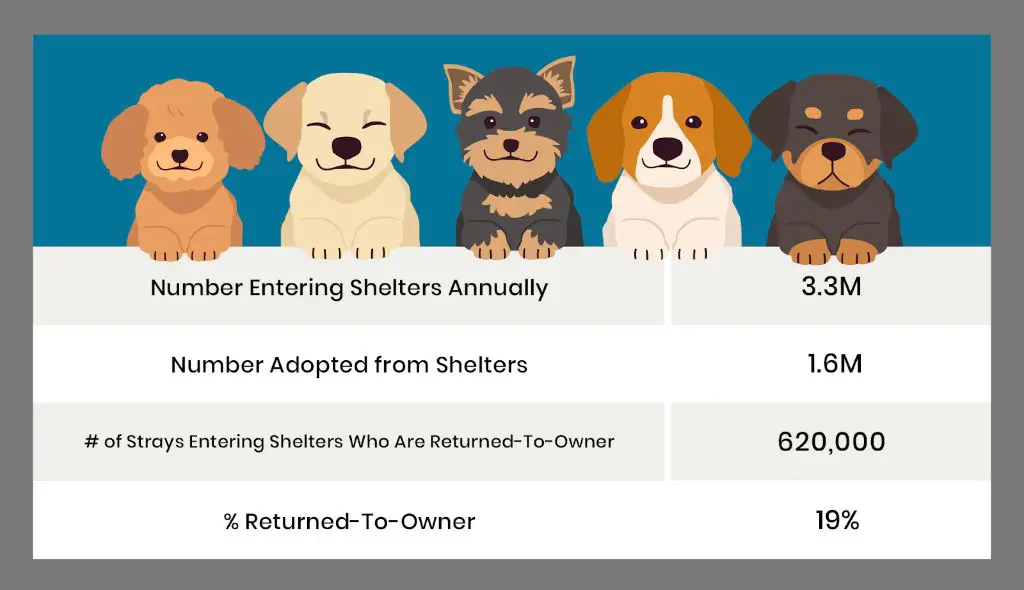The Adoption Screening Process
When seeking to adopt a dog from a rescue organization, potential adopters go through a rigorous screening process. This often includes home visits from rescue representatives, contacting veterinarian references, and completing detailed questionnaires about the adopter’s lifestyle and ability to care for a dog.
Home visits allow the rescue organization to see the environment where the dog will be living. They can check that the home is safe and secure, with no hazards for the dog. They can also evaluate whether the adopter truly has space for a dog based on the size of their home and yard.

Veterinarian references provide insight into whether the adopter has owned dogs before and cared for them responsibly. Veterinarians can share records about the medical care previously provided to the adopter’s dogs.
Lifestyle questionnaires dig deep into the adopter’s daily routine, family and living situation, experience with dogs, and reasons for wanting to adopt. This helps the rescue organization determine if the adopter’s lifestyle is a good match for one of their dogs.
Ensuring a Good Fit
When a potential adopter comes in to meet a dog, the rescue’s priority is ensuring it will be a good fit. The staff spend time carefully matching dogs with owners based on lifestyle, activity level, experience handling dogs, and other factors. They want to make sure each dog will thrive in its new home. This is especially important for more challenging dogs who need owners equipped to handle their unique needs.

The rescue also takes time to observe how the dog interacts with each potential adopter during meet-and-greets. They look for signs of a connection and positive engagement between the human and dog. Some rescues even do home visits to see the environment and test the dog’s interactions there. They want to feel fully confident that the adoption will be successful before sending a rescue dog to its forever home.
Mitigating Risks
While rescue organizations want to find adoptive homes for their dogs as quickly as possible, they also need to mitigate risks to ensure successful placements. One major risk is that dogs could be returned if the adoption isn’t a good match. Returns are emotionally traumatic for dogs and require more resources from already overburdened groups. That’s why screening aims to prevent adoptions by owners who might later have a change of circumstances or lifestyle that forces them to give up their dogs.

Organizations also try to avoid adopting dogs out to people who have a history of animal neglect or abuse. Rescues have a duty to protect each dog’s welfare, so comprehensive screening helps ensure dogs go to committed owners who will provide loving homes. The application process can feel rigorous, but it has good intentions – rescuers want to find the very best owners who will care for adopted dogs for the rest of their lives.
Protecting the Dogs’ Welfare
Animal rescue organizations aim to provide the very best care for dogs awaiting adoption. Shelters want to ensure each dog is placed into a safe, loving home that can provide for all of their needs. Screening potential adopters thoroughly allows rescues to match dogs with compatible owners.
Sadly, animal abuse and neglect still occur too often. Rescues must safeguard vulnerable dogs from potentially going into harmful situations. Careful vetting helps minimize risks of dogs ending up in environments lacking proper food, shelter, training, exercise, socialization, and medical care.

Additionally, some dogs may have past trauma or special needs requiring owners equipped to handle their challenges with patience and compassion. Rescues try to determine if adopters can supply the specific care necessary for each dog’s individual circumstances.
While the adoption process can seem rigorous, it aims to ensure every beloved pet is cherished. Rescues are protecting dogs’ welfare when they confirm adopters are fully committed and capable of providing fulfilling forever homes.
Managing Limited Resources
Most dog rescues operate with very limited resources and tight budgets. They typically have only a small number of paid staff, if any, and rely heavily on volunteers to care for the dogs. With limited staffing, rescues can only properly care for a certain number of dogs at one time before being overwhelmed. This restricts how many dogs they are able to take in. Rescues also incur many expenses in caring for each dog, including food, medical treatment, spay/neuter services, microchipping, training, etc. With limited funds, they can only afford to care for so many dogs at once. Being selective about which dogs they admit is necessary to operate within their constrained resources and ensure every dog receives the individualized care and attention it needs.
High Demand
One of the main reasons rescue organizations have such intensive adoption processes is simply that demand far outweighs supply when it comes to adoptable dogs. There are many more loving families looking to adopt than there are dogs available. This creates a very competitive environment for potential adopters.
Rescues frequently get dozens, if not hundreds, of applications for each available dog. With such an imbalance between applicants and adoptable dogs, rescues have to be very selective in choosing the right match. They want to ensure each dog finds the very best forever home, so they cannot simply accept applications on a first-come, first-served basis. The screening process allows them to get to know applicants well and determine who will provide the optimal home.
While this level of selectivity is frustrating for eager adopters who get passed over, it stems from rescues acting in the dogs’ best interests. With so many applicants for each dog, they can take the time to be extremely discerning for the good of the animal.
Covering Expenses
Animal rescues incur significant expenses to care for the dogs in their program. These costs include:
- Medical care – Rescues take in many dogs with medical issues that require treatment by veterinarians. Common expenses are vaccines, spays/neuters, dental cleanings, surgeries, and medications. These services quickly add up, especially for dogs with complex conditions.
- Food – Quality dog food designed to meet canine nutritional needs does not come cheap. Rescues feed hundreds or even thousands of dogs each year, making food one of the largest line items in their budgets.
- Facilities – Keeping dogs comfortably housed requires kennels, play yards, heating/cooling, bedding, toys, cleaning supplies, and more. Building and maintaining good facilities is a major investment for most rescues.
With limited fundraising and grants, covering these ongoing costs is a perpetual struggle for most non-profit rescues. Thorough screening helps ensure that adopters will be committed to providing lifetime care for dogs once adopted.
Importance of Commitment
Adopting a dog is a long-term commitment that requires dedication for the lifetime of the pet, which is often 10 years or more. This is a key reason why rescues want to ensure adopters are ready for this responsibility before allowing adoption. Dogs form strong bonds with their owners and need stability, consistency and care over the entirety of their lives.
Rescues invest significant time and resources into each dog, with the goal of placing them into their forever home. If an adoption does not work out, it causes trauma and disruption for the dog, who has to be relocated again. It also takes up limited space and resources that could have gone to help another dog initially. By thoroughly vetting potential adopters, rescues aim to minimize disrupted or failed adoptions down the road.
The application process is comprehensive because adopting a rescue dog is a commitment and responsibility not to be taken lightly. Rescues want adopters who are prepared to provide a loving home for the long haul. When adopters make that 10+ year commitment, it helps ensure the adoption is successful and the dog has a stable, caring family for life.
Successes Despite Challenges
While the adoption process can seem daunting to potential adopters, most dog rescues have good reasons for their thorough screening. At the end of the day, these organizations share the common goal of finding forever homes for dogs in need. Despite the challenges, dog rescues have enjoyed many heartwarming success stories.
Rescue dogs that get adopted often go on to live full, happy lives in caring families. With patience and understanding from both rescues and adopters, thousands of dogs are placed in loving homes each year. Families get to welcome a furry new member, while giving a dog a second chance at life.
One story that went viral was that of Jubilee, a pit bull mix who was difficult to place due to a rare skin condition. After extensive media coverage, she was adopted by a dedicated family willing to provide her special care. Many other less famous dogs experience the same beautiful outcome.
While the adoption process can be rigorous, most rescues are just trying to ensure the best for each animal. Despite limited resources, dog rescues give dogs a chance to find forever homes. With collaboration between rescues and adopters, success is possible.
Working Together
Despite the challenges, dog rescues and potential adopters ultimately have the same goal: finding loving homes for dogs in need. With open communication and empathy on both sides, the adoption process can be a collaborative effort rather than an adversarial one.
Rescues should clearly explain their policies and procedures to adopters upfront, providing insight into why thorough screening is essential. Transparency builds trust and shows good faith.
Meanwhile, adopters should demonstrate patience, understanding, and a willingness to answer many questions. Making a sincere effort to meet a rescue’s requirements shows dedication to providing a forever home.
With mutual respect and cooperation, rescues and adopters can work together to ensure each dog is placed in the very best environment. A spirit of partnership, rather than frustration, serves the dogs best of all.